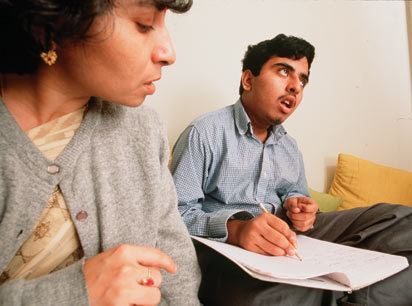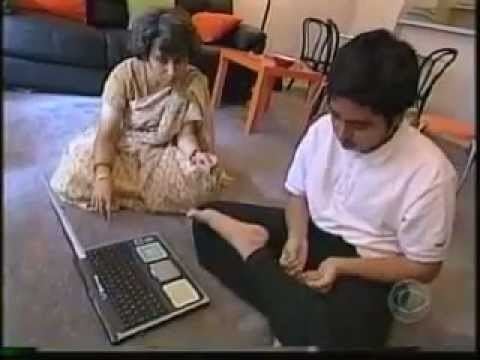Name Tito Mukhopadhyay | Role Journalist | |
 | ||
Books The mind tree, How can I talk if my lips don't, The gold of the sunbeam, I'm Not a Poet But I Write Poe Similar Christopher Knowles , Temple Grandin , Caiseal Mór Born 1989 (age 32), India | ||
Tito mukhopadhyay
Tito Rajarshi Mukhopadhyay (born 1989 in India) was diagnosed in early childhood with severe or low functioning non-verbal autism. He first came to the attention of the west through autism researcher Richard Mills, who met Tito in Bangalore, India and arranged for him to travel to the UK to be assessed by his colleagues at the National Autistic Society and Lorna Wing. At the same time the BBC made the documentary 'Tito's Story' and the National Autistic Society published his first book, 'Beyond the Silence' (2000). He provides insights into the nature of his autism, according to Autism Speaks, the former Cure Autism Now, and scientists who studied his case, such as Michael Merzenich.
Contents
- Tito mukhopadhyay
- Tito mukhopadhyay ralph savarese classical autism and the instruction of literature
- History
- References

Tito's mother, Soma, taught him reading, writing, and thinking. Cure Autism Now (now merged with Autism Speaks) sponsored Tito and his mother to travel to the United States so she could teach them her method, called the Rapid Prompting Method.Tito's first book, Beyond the Silence: My Life, The World and Autism, a collection of prose, poetry and philosophical texts was published in 2000. In the book, he reflects on how his autism affects his view of the world.

Critics of Rapid Prompting Method (RPM) believe that while the users' hand is not being guided during communication (as with the discredited facilitated communication (FC)), prompting does occur through verbal and physical cuing and, rather than foster independent communication for the person with disabilities, RPM creates a dependency on the facilitator to communicate. In rapid prompting, as opposed to traditional FC, the facilitator subtly moves the keyboard or letter board as the individual types without apparent physical assistance. There is presently no scientific support for this method.

Tito mukhopadhyay ralph savarese classical autism and the instruction of literature
History
Soma Mukhopadhyay noticed when her son was 18 months old that he was not responding socially as other toddlers were, when he was 2 1/2 she taught him to write "using methods she would make up as she went along." She used a letter board and focused on English as the Indian dialect was more difficult. She "tied a pencil in his hand and showed him how to make each letter, often refusing to let him eat until he could do so." From Scientific American journalist, Madhusree Mukerjee Soma "observes him with profound intensity and snaps her fingers the moment Tito's thoughts stray--which is all the time during my visit. He seems to be beset by random neural firings. If she didn't intervene, Soma explains, he would write words from a different sentence in the middle of the one he already started." For National Geographic, psychiatrist Lorna Wing visited with Mukhopadhyay in 2005. She describes his mother as having to write out the alphabet which he then pointed to in order to spell out sentences, she also states that the mother had to train him to point, and during this visit in 2005, he was unable to "initiate movements without such guidance" Wing likens this to facilitated communication, needing "appropriate physical guidance." Again using pointing and RPM, Mukhopadhyay was able, as an 11-year old to test as a 19-year old on the British Picture Vocabulary Scale. Soma "demands rapid responses, which she says prevent the child's brain from being distracted." The RPM teaching method relies on "asking the children to point at words on pieces of paper. Once they've mastered that, they use the stencil." Eventually if they develop motor skills to do so, they may move on to "type on a specially designed keyboard." As of 2014, Tito Mukhopadhyay and the Rapid Prompting Method have not been tested or studied scientifically.

